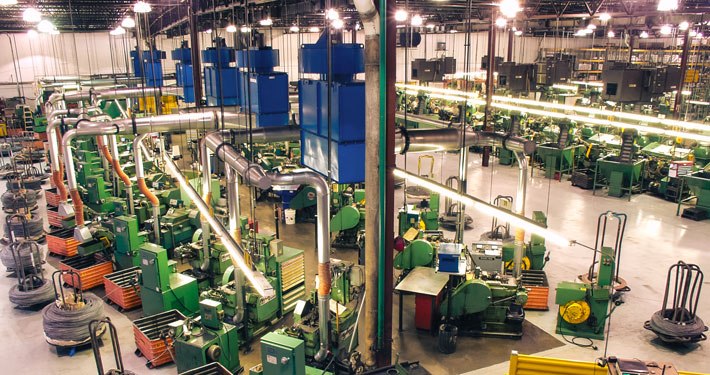
“Manufacturing is a much more significant factor in our economy than official government statistics show, as those numbers only measure the value of the upstream supply chain and only include goods sold to ‘final demand’,” Manufacturers Alliance for Productivity & Innovation CEO Stephen Gold said as part of a 5th annual Manufacturing Day panel in Rockford, IL.
Friday, October 7, 2016 is Manufacturing Day. In advance, the Fabricators & Manufacturers Association hosted a panel on the future of manufacturing in the U.S.
Gold cited motor vehicle manufacturing, which includes production and transport of materials, R&D and corporate services in the upstream chain.
“When you include the downstream sales chain, the impact is magnified and multiplied,” Gold said of the chain which encompasses retail auto dealers, transport and import of the finished vehicles, wholesale operations and aftermarket services.
Using the traditional upstream supply formula across all segments, manufacturing represents 11% of GDP and 9% of employment, Gold said. The downstream sales chain analysis provides a more complete, robust picture – a remarkable 33% of GDP and 33% of employment.
Dr. Chris Kuehl, managing partner at Armada Corporate Intelligence and FMA economic analyst, explained that the manufacturing sector is the “dominant player in U.S. exports, particularly with heavy machinery and other capital goods.”
“And, the U.S. is more export dependent than people realize; it accounts for 14% of GDP, almost matching export-driven Japan at its 14.7% of GDP,” Kuehl said. “What most people don’t recognize is that the U.S. accounts for 30% of all global manufacturing by value. China accounts for only 10%.”
Panelist Kenneth Voytek, chief economist for the Hollings Manufacturing Extension Partnership Program, notes that 99% of manufacturers have less than 500 employees.
“It must be recognized that small firms do face a different set of challenges when compared to larger firms,” Voytek said. “They don’t have the deep pockets and deep resources like those competitors. But opportunities are available for them to improve in the areas of operational excellence, strategies, new product development and entering new markets.”
Among the problems are how job openings are outpacing hiring in manufacturing, Voytek said.
Scott Mayer, chairman and CEO of QPS Employment Group, pointed out that “every day the baby boomers are retiring at a high rate and a new generation of workers in this sector is needed.”
Filling this gap continues to be an issue, Mayer added. High school teachers and counselors continue to direct too many students to attend college for traditional four-year degrees when a large number of young people may be better suited to focus on the skilled trades, Mayer suggested.
“There is not enough recognition that manufacturing today offers many good, well-paid middle-class jobs. Sadly, such jobs are usually not considered an ‘in’ thing. Parents need to steer their kids in the right direction when it comes to career choices.”
Manufacturing Day features thousands of companies hosting students, teachers, parents, job seekers and community leaders at open houses, plant tours and educational sessions to showcase modern manufacturing technology and jobs.
“Manufacturing Day truly dispels old, negative myths about manufacturing and highlights the shift from a labor-intense environment to one of high-tech, robotics and computers,” said Kuehl. “The open houses help eliminate images people may have of dirty, dangerous factories from days of yore.” Web: MfgDay.com

Share: